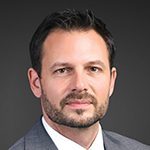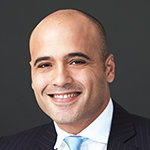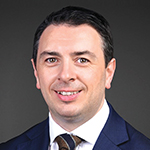Emerging markets – a good time to invest?

|
Written By: Pádraig Floyd |
Pádraig Floyd looks at how Emerging markets were faced with numerous macro economic and geopolitical challenges in 2022, Yet they have shown resilience and as an asset class, appear to be positioned for stronger performance
There were three main headwinds for emerging markets (EM) in 2022 – China’s zero Covid-19 policy, aggressive monetary policy tightening globally and the Russian invasion of Ukraine. Two of those three factors are likely to become tailwinds in 2023, says John Malloy, head of emerging and frontier markets at Redwheel. The first reason is that China has already started to reopen its economy. The second is that the Fed may pause hikes in the first half of the year and possibly cut rates towards the end. “This would lead to a weaker dollar and a dovish Fed combined with China reopening,” says Malloy. “Korea creates a favourable environment for emerging market equities to outperform.”
And while economic growth is likely to increase in EM during 2023, supported by China and Latin America, says Malloy, developed markets (DM) are expected to see GDP growth decline to almost zero, widening the differential between EM and DM in 2023 and 2024, setting a strong backdrop for EM equity prices.
Deglobalisation is a good thing for EM
“History tells us that longer duration EM outperformance is driven by earnings super cycles where sustained – and superior – dollarised earnings per share growth against the US requires a seismic underlying shift in the EM investment case,” Malloy says.
This is happening, says Malloy, as the global economy diverges into two major trading blocs – one broadly aligned to the US and the other to mainland China.
Malloy says there will be “winners from this deglobalisation” and says there are four key themes to consider.
They are:
- Supply chain reorientation and nearshoring
- Energy diversification and independence
- Deployment of EM personal sector savings and new financial hubs are secular growth stories benefiting from independent domestic demand growth mostly rooted in demographics
- Infrastructure spending
The accumulation of these thematic pillars sets up an attractive growth story going forward,” says Malloy.
Pramol Dhawan, managing director and portfolio manager for emerging markets at PIMCO, agrees that structural forces such as deepening local markets and nearshoring support EM fundamentals. He believes the asset class is now both structurally and cyclically under-owned following the EM fund outflows in 2022. He also believes EM valuations are “historically cheap”.
“As a result, we are becoming increasingly positive on EM more broadly and select EM local debt in particular,” says Dhawan. “Still, we remain cautious until the outlook for monetary policy becomes clearer, as much depends on the Fed’s ability to tame inflation and China’s ability to reactivate economic activity.”
2023: the year of fixed income
Though EM equities may perform well, Omotunde Lawal, head of EM debt at Barings believes 2023 is “the year of fixed income”.
“In a world where we think the developed markets – and sub-markets – are going to head into a recession I’m not sure there’s a case there for equities,” says Lawal. “Equities is about growth in that upside and if you’re looking at a recession, or stagnant growth if not a recession, zero to half a percent growth doesn’t provide a lot of comfort.
“So certainly, I would say that there’s a reason to be allocated to fixed income versus equities at this point, even for local authorities.
“You can get quite high quality assets with mid single digit yields and you’re not taking a huge amount of risk to get that versus chasing just slightly higher dividend yields from a more volatile equity.”
A broad – and growing – church
Emerging markets as a universe has broadened considerably over the last couple of decades. There are 65 to 70 countries that make up EM and some of them are quite developed, though they remain within the EM category. Markets like Singapore, Hong Kong and Malaysia are all considered EMs, but are fairly well developed and highly rated.
These EMs have been developing and that is why they have a place in portfolios. Look at the world right now – inflation is at elevated levels, Covid supply chain disruptions continue and there is a war in Ukraine. Within that context, interest rates have been going up and central banks have been raising rates.
The expectation for developed market (DM) growth is low and there’s that differential between EM and DM growth. As we head deeper into 2023, inflation remains high globally and parts of the DMs – US and parts of Europe – may enter recession.
Yet, EMs are still growing and that growth differential is expected to be around 2.5% this year, says Lawal.
“When you’re allocating to your portfolio, why would you be allocating more to markets that are going to be in recession or at best flat versus a group of markets that are going to be growing?” asks Lawal.
Diversification, diversification, diversification
While growth is an important consideration, so is diversification.
“EM is pension funds’ and insurance companies’ main tool for diversification. You need representation across the world, because that’s where the structural demographic trend is going to develop markets. “If you are a pension fund, local authority or insurance company, you should be positioning your portfolio for something that takes advantage of the structural trends as well.”
But there’s another very good reason for EMs to be important, says Lawal, and that’s the risk-adjusted return. When comparing an EM investment grade company with a US, for example, the quality – or health – of the EM company’s balance sheet is typically better. “It’s an illusion that you are taking way more risk in EM,” she says.
EM companies by their very nature are usually quite conservatively run because they know that investors don’t always give them the benefit of the doubt. A typical high yield EM company will only have leverage of about 1.8 times debt to earnings. The equivalent US firm will be 3.6 times.
“So your average US high yield company has doubled the amount of debt to its earnings as an EM company,” says Lawal. “The US company is the one that will struggle to service that debt and have less headroom to absorb higher costs.”
Don’t forget the ESG
The growing implementation of environmental, social and governance (ESG) factors into pension funds’ investment strategies is also driving some interest in EM allocations.
The majority of the world’s population lives in EM countries, they produce most of the commodities that drive industry, yet that is also where a lot of the transition needs to happen. So, to some extent, EM investment is likely to have a foot in the ESG camp. But different funds will have to decide how the assets available fit with their bigger picture for net zero and climate change.
In recent months, some local authorities have reappointed EM equity managers, while others have ditched hioldings or put investments on hold, concerned with the data they’re receiving against these metrics. But EMs are going to need a lot of investment. Those frontier markets – particularly in Africa – that were growing steadily in anticipation of a population boom mid-century, have had their wings clipped, firstly by Covid and then by rocketing inflation.
It remains a bright spot from a demographic perspective, but in the short to medium term, they have bigger fish to fry.
Focus on the prize
Whatever the positives, EM markets are “unquestionably volatile”, says John Looby, senior portfolio manager, KBI Global Investors. There are certain things Looby is wary of in EM companies, such as higher levels of new share issuance and increasing levels of discretionary capex with declining rates of return on equity. “Simply put,” says Looby, “They are over-investing.”
But the “cycle of capital destruction” also offers opportunities, to encourage reform, and push for improved financial performance, and ultimately, better returns, as these companies evolve to employ developed world like standards.
“Sometimes eliminating negatives can boost performance just as much as creating new positives,” says Looby. “Whereas growth is not always profitable, corporate reform means profitability can be improved without growth.”
Investors who enter EMs after periods of crisis or underperformance have consistently achieved better returns than those offered by developed markets, says Looby. “We believe that we are at such a juncture again. The combination of attractive valuations, the crucial role of dividends, and the significant scope for corporate reform suggest that contrarian boldness is set to reap outsized rewards.”
PIMCO’s Dhawan urges investors to stick to high quality assets and not be tempted by low-quality EM credits trading at high yields, instead focusing on investment grade and BB portion of fixed income, which offers a lower risk profile and where forced sales have created value. “We think the worst is likely behind for EM, with investors likely to find improved opportunities across the EM landscape this year,” says Dhawan, who favours EM local assets in markets with high real rates. These include Brazil; corporate credit in commodity-exporting countries; select EM financials; and currency long positions in countries such as Thailand that he believes are well positioned for the upside in China.
More Related Content...
|
|
|




